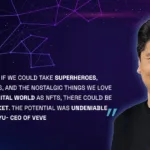In a financial landscape increasingly defined by tokenized real-world assets (RWAs), OilXCoin is emerging as a trailblazer at the intersection of blockchain and natural resources. At the core of its mission is a desire not only to tokenize energy reserves but to build bridges between two worlds that often appear in tension: traditional industries like oil and gas, and the emerging crypto economy.
Global reach, local insight
Speaking to AltCoinDesk.com, OilXCoin co-founder Dave Rademacher offered a candid view into how his international corporate experience shaped the company’s approach to scaling and adapting across diverse markets.
“With crypto, the marketplace is the world,” Rademacher said. He emphasized how firsthand exposure to different markets and people, was key to successfully scaling ventures. “It helps a lot to have a cultural understanding of where people are coming from. If you’ve had real, local touchpoints and you’ve been to those markets, you get a feeling for how people tick — what drives and motivates them.”
Having built and scaled teams within large corporations before turning to startups, Rademacher said the lessons of structure, process, and failure were invaluable in navigating the relatively volatile crypto market with processes.
Building an entry token to bridge two worlds
A key challenge OilXCoin confronted early on was how to make its product resonate with two vastly different audiences: seasoned crypto natives and traditional oil and gas investors. He highlights that being an entry token is essential to how they function in the market.
The whole idea of our of our token being a security that’s backed by oil and gas is to position ourselves as an entry token
The company conducted market research and attended industry conventions to better understand this gap, discovering a real appetite for blockchain exposure — but only with the right framing.
Centralization vs decentralization: Complementary forces?
Rademacher also reflected on the deeper ideological tensions between centralized legacy industries like oil and gas and the decentralized ethos of blockchain. Rather than viewing the two as incompatible, he sees blockchain as a complementary force — one that increases access, transparency, and capital flow into traditionally exclusive asset classes.
It (decentralization) just really gives access people to financial investments that were, let’s say — near impossible you know there’s sometimes there’s other financial products but this definitely makes it a lot more convenient to be able to do that.
He noted that breaking large, illiquid assets into fractional, tradable tokens unlocks a broader investor base and can drive liquidity where it didn’t exist before.
Navigating the regulatory terrain
But these innovations come with regulatory hurdles, particularly for companies issuing security tokens like OilXCoin. Rademacher pointed out that while the legal foundation of their model is strong, the infrastructure for secondary markets is still evolving. Rademacher added that the compliance burden and legal perspectives are often underestimated by new entrants.
“So I find one of the the the topics that a lot of people underestimate is how important it is especially from a legal perspective that all the boxes are ticked. So it’s one thing to be legally in the right space as an issuer.” Dave explains.
A unique hybrid model: Reserves + production
What further distinguishes OilXCoin is its dual-structured token model, which reflects not only the value of oil and gas reserves but also the upstream production and sales activity. This, Rademacher noted, is part of what classifies the token as a security, but also what gives it long-term growth potential. “It’s an interesting product that you can make the best of both worlds from a commodity peg into how at the end of the day a company exists and profits from extracting and selling that product at the end of the day.” He says.
$OXC is backed by real-world assets: natural gas & oil reserves and their upstream value chains. This gives token holders a unique RWA opportunity 🛢️
— OilXCoin (@OilXCoin) April 11, 2025
Learn more: https://t.co/gi9tZNL1v3#OilAndGas #Tokenization #OilXCoin #RWA pic.twitter.com/lDg5FKgS7Z
The road ahead
With growing institutional interest and forecasts predicting the RWA market to reach trillions by 2030, Rademacher believes the trend is irreversible.
“We have the opportunity globally to open up so many opportunities for people that just weren’t there in the past, these traditional — very often conservative institutions just wouldn’t touch things like that with a 10-ft pole.” said Rademacher.
While challenges remain from infrastructure gaps to public education, OilXCoin is betting that a balanced approach, rooted in traditional asset value and powered by blockchain transparency, will earn the trust of both markets.













